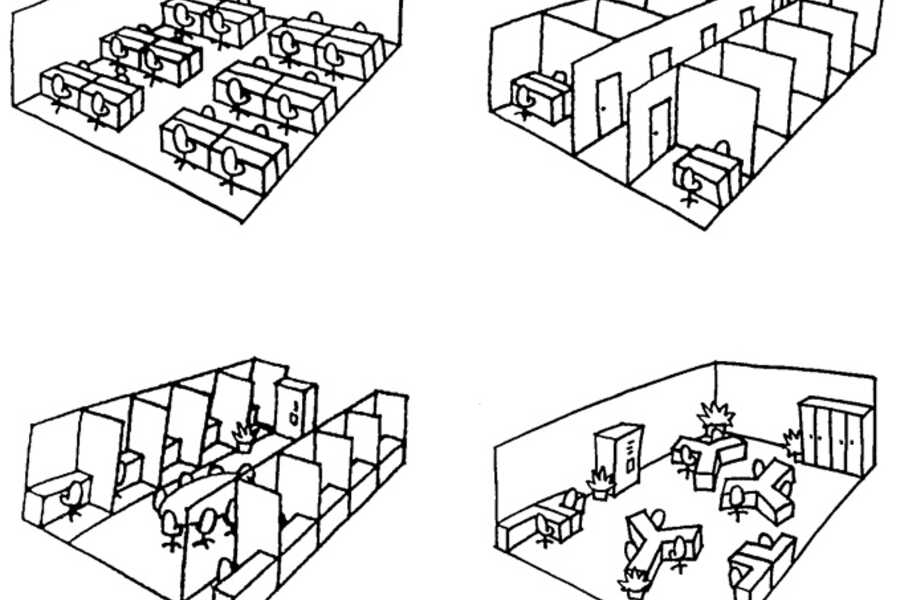Most office workers today are engaged in many parallel processes and will decide to travel only after weighing the importance of human interaction against the urgency of their other commitments. People will consider context, time, cost or environmental reasons, perhaps by thinking, ‘Can we possibly do this over the phone? Do I really have to be there? For how long? Are conferencing facilities available?’ Without suggesting that human presence has lost its importance in today’s work life, one could perhaps say that we have now entered a phase where presence is negotiated. It is significant to note that in spite of different presence technologies—which enable office workers to participate remotely and to meet, produce and deliver work from mediated spaces away from the office—surprisingly few changes in terms of office design have been seen. Although many different configurations exist, the spatial strategies of the office are still limited, and most can be traced back to the basic and distinct typologies of the cellular and the open plan office (also known as the bull pen). The main difference between these two strategies is that individuals in the former are partitioned off from each other by walls in order to ensure distinct audiovisual separation. The spatial strategies are illustrated below (Fig. 17).
New meanings

The concepts of working and meeting have quite recently acquired new meanings in the sense that we no longer take it for granted that a person will undertake a trip or commute to attend a work-related meeting.

